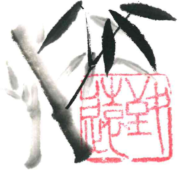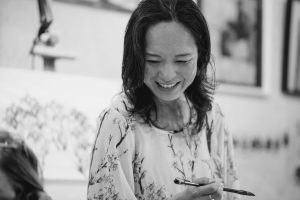The Japanese art of ink, or sumi, manifests itself in several disciplines that share basic tools, but differ profoundly in intention, technique and philosophy. Prominent among these are sumi-e, suibokuga and shodō. Though often confused, each brings its own voice to the vast visual and spiritual repertoire of Japanese art. In this guide you will discover their main features, connections and how to choose the most inspiring route for your practice.
What is sumi-e?
Sumi-e (墨絵), literally ‘ink painting’, is a discipline that originated in China and has been adapted in Japan since the 14th century by Zen monks. Its aim is not to faithfully reproduce the physical world, but to capture its spiritual essence with minimal strokes, white space and meditative rhythm. It often depicts natural elements such as bamboo, flowers, birds, landscapes or simple scenes, providing an aesthetic and contemplative experience.
In Kaoru Hirose’s sumi-e courses, he works on mastery of the brush and breathing to teach how each seemingly simple line is a conscious act. Sumi-e teaches that less is more, that beauty is in what is suggested and that the calm mind is reflected in the work.
What is suibokuga?
Suibokuga (水墨画), which literally means ‘ink and water painting’, has a more academic origin and a historical line more centred on the Chinese technique of the Song period. In contrast to the expressive freedom of sumi-e, suibokuga seeks depth, volume and detail: it uses multiple washes of ink, subtle tonal transitions and a more complex compositional structure.
To understand its importance, it is useful to visit a site such as the Nezu Museum in Tokio, where you can explore traditional suibokuga works and calligraphy executed with technical precision. This approach will help you appreciate how suibokuga masters ink and water to evoke dense, realistic atmospheres, while keeping the monochrome elegance alive.
What about shodō? The art of Japanese calligraphy
Shodō (書道), or ‘way of writing’, is Japanese calligraphy, an art that transforms the writing of characters into an aesthetic discipline. Unlike sumi-e and suibokuga, shodō does not seek to represent objects; its purpose is to express the beauty, rhythm and emotional weight of language through each stroke. It is about writing characters with harmony, balance and rhythm, reflecting the vital energy (ki) of the artist.
Although shodō uses the same materials – brush, ink, rice paper – its practice focuses on the technique of writing: the pressure of the brush, the continuity of the stroke, the visual composition of the characters and the relationship between space and figure. Harmony arises from the connection between the body, the mind and the written word.
Shared tools, different approaches
All these disciplines use three elements in common: brush (fude), ink (sumi) and paper (washi or hanshi). The difference is in the way they are used:
-
Sumi-e: expressive painting, controlled strokes and significant gaps.
-
Suibokuga: tonal washes, depth and intense monochrome texture.
-
Shodō: calligraphic writing, emphasis on the shape of the characters, rhythm of the stroke.
Each discipline also requires different ways of wetting the ink, controlling the pressure, modulating the brush and drying the work, which are taught in Kaoru Hirose’s face-to-face programmes.
Connections and combinations: beyond the division
Although they are separate practices, they can be merged. A visual work might include a calligraphic phrase executed in the shodō style, or a suibokuga landscape might decorate a sheet of paper with poetry written in ink. Kaoru offers workshops where these elements are combined to generate multidisciplinary works, integrating image, word and atmosphere into a single piece.
Benefits of each discipline according to your interest
-
Sumi-e: ideal for those seeking meditation, spontaneity and expressive connection.
-
Suibokuga: suitable for those who wish to deepen their technique, detail and tonal depth.
-
Shodō: perfect for those who love calligraphy, the spirituality of language and graphic precision.
In her blog, Kaoru has recounted experiences of students who started with sumi-e and then moved on to shodō, expanding their skills and aesthetic sensibility.
How to learn and choose the right path
Start by defining your creative goal: do you want free expression or choreographic writing? If you are drawn to natural forms, start with sumi-e. Interested in tonal gradations and detail, choose suibokuga. If you feel a special connection to kanji symbols and stroke rhythm, start with shodō. Courses include introductory prices, student testimonials and access to recommended materials – all available in the online and in-person workshops section.
Stories from the studio: student experiences
Alba, a shodō student in Seville, tells how “the practice calms my mind and teaches me patience”, while Jordi, from Madrid, relates how sumi-e helped him reconnect with his inner self after long days at the office. These stories are featured on the guest pages and testimonials section of the site.
A path for every spirit
Sumi-e, suibokuga and shodō share ink, brush and a certain spirituality, but each offers a unique experience: emotive painting, profound technique or artistic writing. In Kaoru Hirose’s studio, you’ll find the guidance and context you need to begin or perfect your skills in any of these ancient arts.
If you want to explore further, take a look at the Gallery section, which features examples of works created in all three disciplines, and book a place on the next available courses in both sumi-e and shodō.



